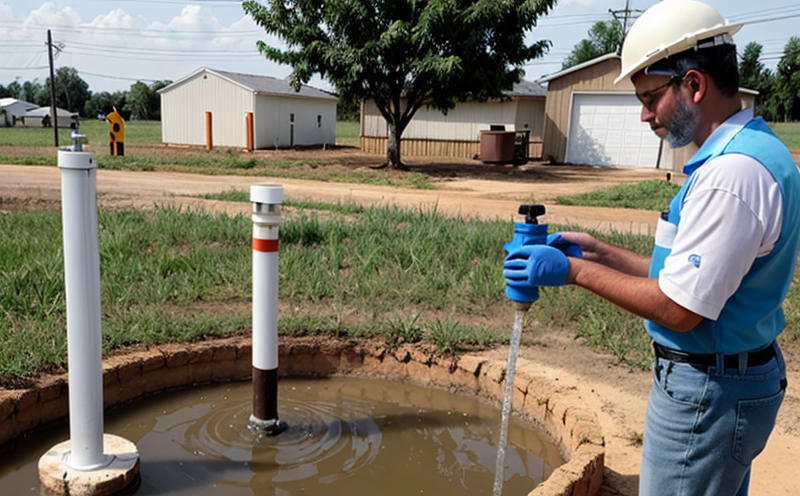ISO 17294-2 ICP-MS Trace Metal Testing in Groundwater
The ISO 17294-2 standard provides a robust framework for the determination of trace metals in groundwater using Inductively Coupled Plasma Mass Spectrometry (ICP-MS). This method is critical for ensuring that drinking water and other uses comply with regulatory standards, such as those set by the World Health Organization (WHO) and the United States Environmental Protection Agency (EPA).
The process involves several key steps: sample collection, preservation, and preparation. Samples are collected from various depths in the aquifer to ensure a representative profile of trace metal concentrations. Once collected, samples are preserved using appropriate fixatives or stabilizers to prevent metal precipitation or leaching during transport.
Sample preparation is critical for accurate results. This includes digestion with strong acids like nitric acid (HNO₃) and perchloric acid (HClO₄), which break down complex organic compounds into simpler forms that can be analyzed by ICP-MS. The digested samples are then diluted to the appropriate concentration range for analysis.
The use of ICP-MS offers several advantages over other analytical techniques, including high sensitivity and selectivity, allowing detection limits as low as 0.1 ng/L for many trace metals. This makes it ideal for detecting even minute concentrations of contaminants in groundwater. Additionally, the method is capable of simultaneous multi-element analysis, reducing sample preparation time and improving throughput.
The ISO 17294-2 standard specifies detailed procedural steps to ensure reproducibility and accuracy. These include calibration using certified reference materials (CRMs), quality control checks, and proficiency testing. The use of CRMs ensures that the calibration curves are accurate, while quality control checks help identify any potential errors in sample handling or analysis.
| Standard | Description |
|---|---|
| ISO 17294-2:2018 | Determination of trace metals in water by inductively coupled plasma mass spectrometry (ICP-MS) |
The standard also outlines acceptance criteria, which typically involve comparing the measured concentrations against established limits. For example, lead should not exceed 10 μg/L according to WHO guidelines for drinking water.
Groundwater is a vital resource that supports ecosystems and human activities. Ensuring its quality through rigorous testing helps protect public health and the environment. By adhering to ISO standards like 17294-2, laboratories can provide reliable data that informs decision-making processes in water management.
- Water utilities
- Agricultural stakeholders
Why It Matters
The quality of groundwater is essential for both human consumption and ecological health. Contaminants such as arsenic, lead, mercury, cadmium, chromium (VI), nickel, and other trace metals can pose significant risks to public health if present in concentrations above safe levels.
Groundwater serves as a primary source of drinking water for millions worldwide. Ensuring its purity is crucial not only for individual well-being but also for broader societal benefits like sustainable agriculture and industrial processes. The ISO 17294-2 standard ensures that these critical resources are monitored effectively, helping to maintain long-term sustainability.
From a regulatory perspective, compliance with such standards demonstrates commitment to environmental stewardship and public safety. It also enhances stakeholder trust in water management practices by providing transparent, scientifically sound data.





